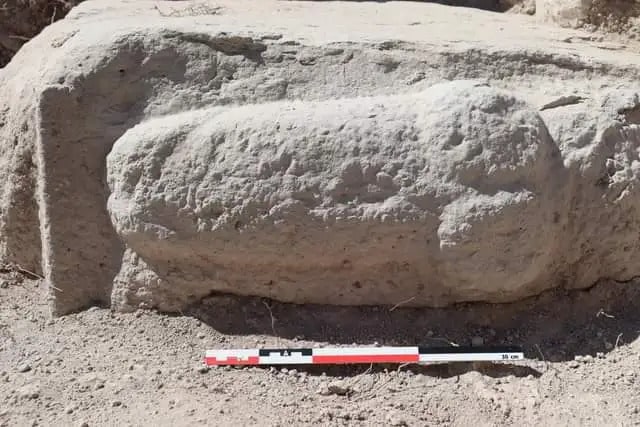Archaeologists discover one of the largest Phallus Relief Carving of ancient Rome
According to an announcement by the region’s local history museum, a large Roman-era relief carving of a phallus has been unearthed by archaeologists excavating at Nueva Carteya in Córdoba, Spain on August 19.
Amulets and phallic representations were popular in ancient Rome because they were thought to be good luck symbols and heralds of favorable omens. They were associated with natural fecundity in Pagan religions, and the phallic symbols represented the fertility god Fascinus, warding off the “evil eye.” Although these phalluses were common in homes and military camps at the time, the size of the recently discovered phallus was not.
Over 18 inches (0.5 meters) long, the bas-relief phallus was discovered in El Higuerón, carved on a cornerstone of a large building that is currently being excavated. It could be the largest preserved Roman phallus carving, according to archaeologists.

El Higuerón is an Iberian settlement first occupied in the 4th century BC until the Roman conquest of the region around 206 BC.
However, despite the spectacular find, the building where the large penis was carved is the most significant part of the archaeological excavation. Professor Andrés María Adroher Auroux is leading a group of archaeologists from the University of Granada (Spain) that is part of a larger team of experts from the Historical Museum of Nueva Carteya and the Center for Archaeological Research of Southeastern Spain (Centro de Estudios de Arqueología Bastetana ). Their goal is to investigate and excavate this old Roman building that was placed over an even older Iberian settlement. Its strong, terraced walls once held up a tower-shaped structure whose purpose is still a mystery.
The first walled Iberian settlement from the fifth century BC was found during the initial excavations carried out in this region of gently rolling hills and olive groves in the middle of the 1960s. The pre-existing settlement was later destroyed by the Roman conquest, and the tower-shaped building, measuring 65 by 55 feet (20 by 17 meters), was built on its ruins.

The majority of the area’s unearthed structures are described in a 1970 paper on local fortified precincts by Javier Fortea and Juan Bernier, which makes an inference that these buildings may have been used by Hannibal, the Carthaginian general who led his army through southern Iberia at the end of the third century BC. The results of more recent research, however, clearly show that they have Roman roots.
The archaeologists describe the structure at El Higuerón as a “monumental Roman building” with perimeter walls six feet thick (1.8 meters) made of large limestone blocks.
Cover Photo: Ancient Roman phallus relief carving found in Nueva Carteya, Córdoba, Spain, 2022. MUSEO HISTÓRICO LOCAL DE NUEVA CARTEYA

No comments:
Post a Comment